Here is a total population map of the U.S.

Similarly, here is a population density map of the US.
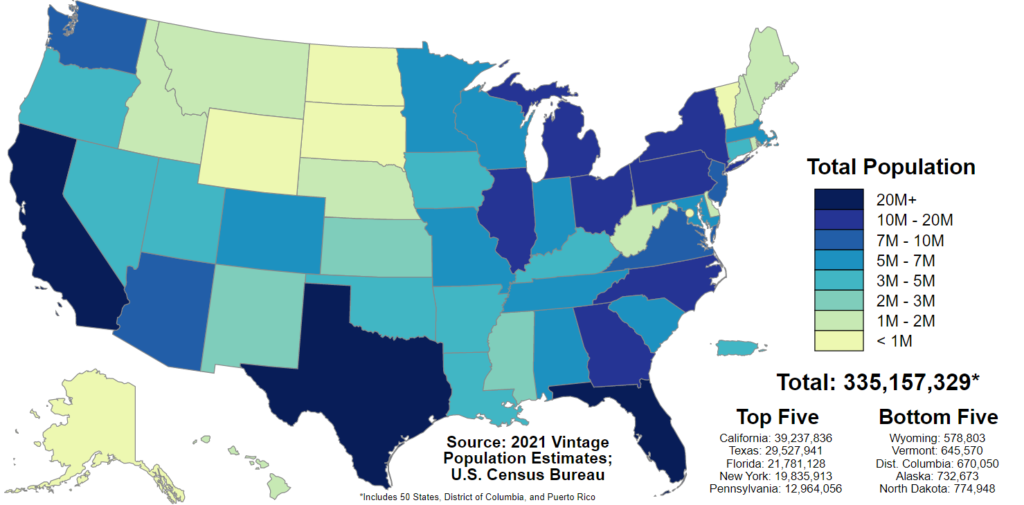
The population density map however is more correlative of this other interesting map:
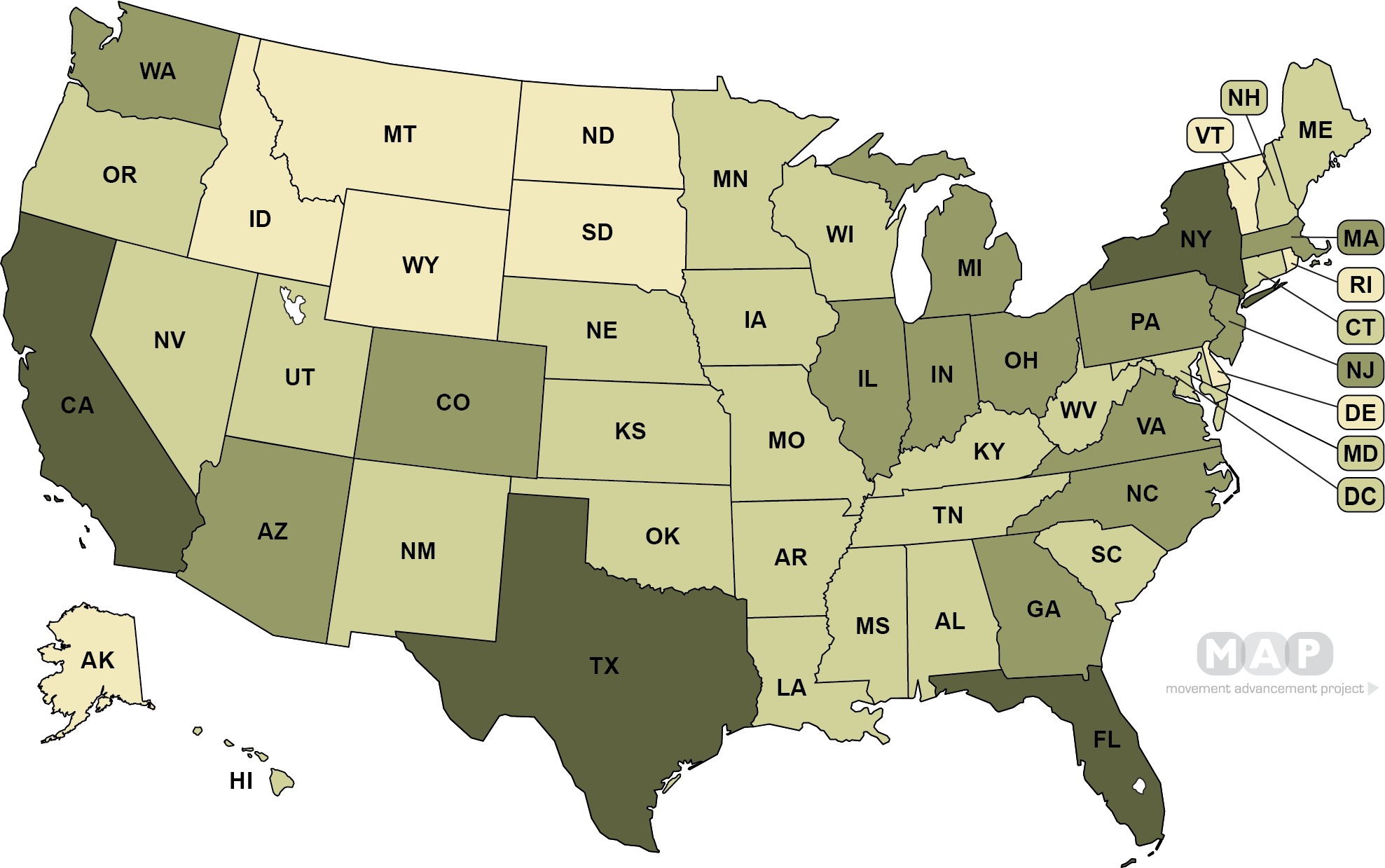
Now, time to animate the results
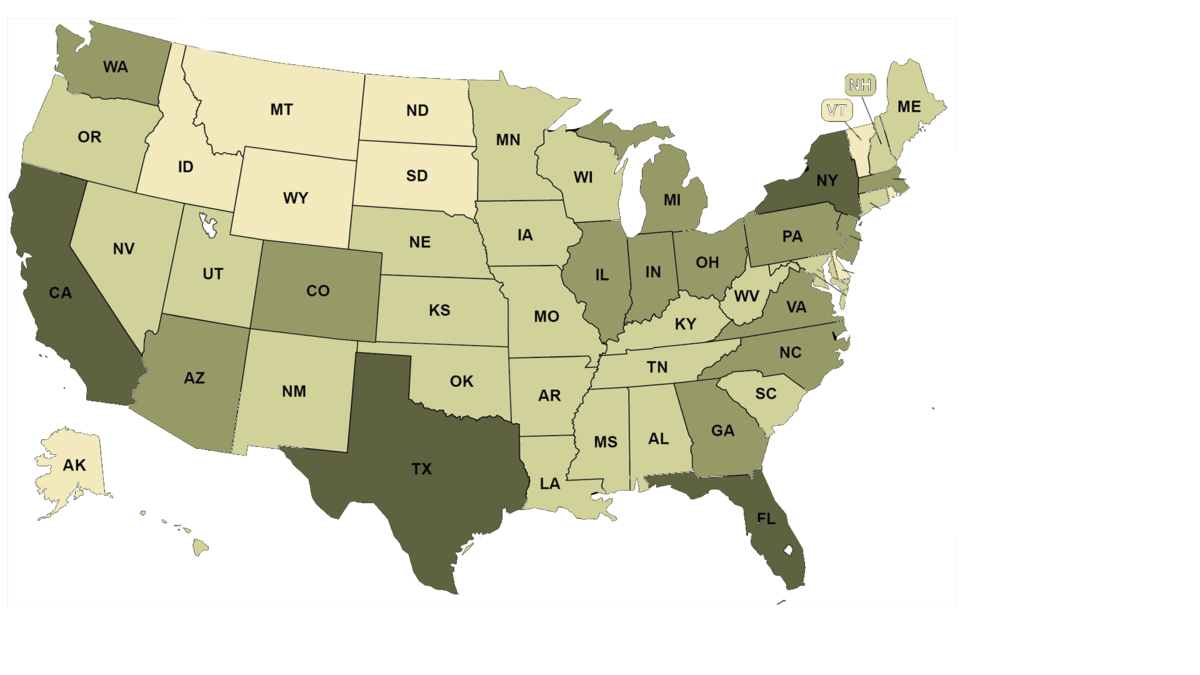
I would so much prefer to do the same analysis at the local (county/zip/city) level, but I do not think the data exists yet.
In Brazil however, homosexuality rates are highest in highly urban areas.
The most likely fundamental explanation is that social norms and psychological needs change to fit perceived fertility demand. In other words, as the need for population growth seems to decline in more crowded areas, traditional fertility behaviors decline. In fact, lots of other classical survival behaviors decline when populations get overly successful, which in the US, usually correlates perfectly with population density. This is not to say that the effect may be purely social, although it may be. There may be genetic factors that trigger in overpopulated areas.
Enter Calhouns rats and his “behavioral sinks.” John Calhoun studied mice populations in mice cities he constructed, then gave them unlimited food to see what might happen. I am not 100% sure his methods were scientific, but worth considering if they were.
However, these are animals. Humans are not animals unless they believe they are (we are just monkeys with blue jeans, right?). Humanity can become whatever it believes it is destined to become. We are not mice.
Following is a piece from the mouse trap company, because I have no interest in writing up the detailed summary of his experiements:
Between 1968 and 1970, American ethologist John B. Calhoun (1917-1995) conducted a behavioral study of captive mice within a nine-square-foot enclosure at a rural facility in Poolesville, Maryland. Within the enclosure known as Universe 25, several pairs of mice bred a population, which ultimately swelled to 2,200. Eventually, they established social orders that created inside and outside factions, and soon mating ceased altogether.
The study confirmed his grim hypothesis, based on earlier studies of the Norway rat in small settings. In his theory he suggested that overpopulation spawns a breakdown in social functions. That, in turn, inevitably leads to extinction.
Though wildly controversial when first made public, Calhoun’s theory has raised concern over the years that the social breakdown of Universe 25 could ultimately serve as a metaphor for the trajectory of the human race. Consequently, the “rodent utopia project” has been a subject of interest among architects, city planning councils and government agencies around the world.

Early Rodent Studies
Calhoun began his experimental research on rodents in 1947, when he studied an enclosed group of Norway rats at a barn in Rockville, Maryland. Supplying the critters with unlimited food and water, he expected to see their population swell to 5,000 over the course of the 28-month experiment. However, the population capped out at 200 after subdividing into smaller groups, each of which comprised merely a dozen individuals.
Continuing with these studies during the 1950s, Calhoun set up a more complex enclosure to examine how further groups of rodents would behave in a sterilized, predator-free environment. Over the course of these experiments, the same sequence of events would transpire each time:
- The mice would meet, mate and breed in large quantities.
- Eventually a leveling-off would occur.
- After that, the rodents would develop either hostile and cliquish or passive and anti-social behaviors.
- The population would trail off to extinction.
In 1962, Scientific American published Calhoun’s observations from his research in the article “Population Density and Social Pathology,” wherein he coined the phrase “behavior sink” to describe the results of overcrowding — namely the breakdown of social functions and the collapse of populations — in the enclosed rodent environment. Hitting the public just as vast urban expansion saw growing numbers of college grads flocking to big cities for work opportunities, many viewed the article as a warning of what could happen to the human race if populations continued to rise at their current rate.
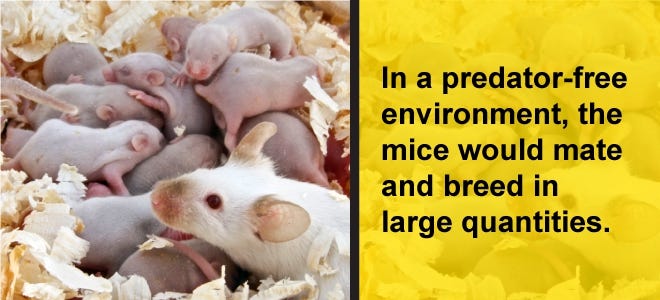
Universe 25: Calhoun’s Experiment with a Rodent Utopia
Expanding on his earlier studies, Calhoun devised his ultimate research experiment. In Universe 25, a population of mice would grow within a 2.7-square-meter enclosure consisting of four pens, 256 living compartments and 16 burrows that led to food and water supplies.
With a plague-free environment, a plenitude of comforts, a lack of predation and an unlimited supply of consumables, the mice would enjoy all the luxuries equivalent to modern human life. Calhoun initiated the experiment with four pairs of healthy mice, which were set loose into the enclosure to begin the new society.
During the first 104 days — a phase Calhoun dubbed the “strive period” — the mice adjusted to their new surroundings, marked their territory and began nesting. This was followed by the “exploit period,” which saw the population double every 55 days. By the 315th day, Universe 25 contained 620 mice.
Despite the abundance of space throughout the enclosure — each compartment could house up to 15 individuals, and the overall enclosure was built for a capacity of 3,000 — most mice were crowding select areas and eating from the same food sources. The act of eating, as it turned out, came to be viewed as a communal activity, which caused most of the mice to favor the same few compartments.
All of this huddling, however, led to a drop in mating, and the birthrate soon fell to a third of its former level. A social imbalance also took place among the mice:
- One-third emerged as socially dominant.
- The other two-thirds turned out less socially adept than their forbearers.
- As bonding skills diminished among the mice, Universe 25 went into a slow but irreversible decline.
Social Status in Universe 25
By Day 315, behavior disparities between males of high and low status became more pronounced. Those at the bottom of the pecking order found themselves spurned from females and withdrew from mating altogether. Having no roles to fulfill within the society of mice, these outcast males wandered apart from the larger groups to eat and sleep alone — and sometimes fight among one another.
The alpha males, by contrast, became more aggressive and pugnacious, often launching into violence with no clear provocation or motive. At times, these males would roam around and indiscriminately rape other mice, regardless of gender. Meanwhile, the beta males — those ranked between the aggressive alphas and outcast omegas — grew timid and inert, and often wound up being the passive recipients of violence. In several instances, bloodbaths ended with a cannibalistic feast for the victors.
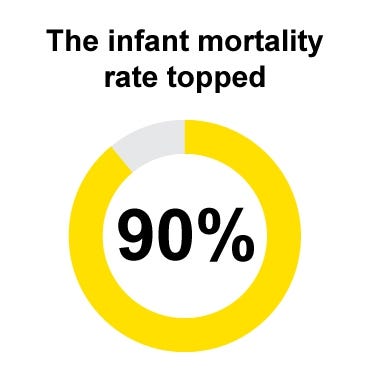
With male mice abandoning their traditional roles in Universe 25, the females were left to fend for their nests. Consequently, many females adopted more aggressive forms of behavior, which would sometimes spill over into violence toward their young. Others would refrain from motherly duties altogether, banishing their unraised litters and withdrawing from further mating, resulting in serious consequences:
- In some compartments, the infant mortality rate topped 90 percent.
- Calhoun named this the “stagnation phase,” alternately known as the “equilibrium period.”
- He attributed the overly aggressive and passive behavioral patterns to the breakdown of social roles and rampant over-clustering.
A Spike in the Mortality Rate
By the 560th day, the population increase had ceased altogether as the mortality rate hovered at 100 percent. This marked the start of the “death phase” — aka the “die period” — in which the rodent utopia slid toward extinction. Amidst the violence, hostility and lack of mating, a younger generation of mice reached maturity, having never been exposed to examples of normal, healthy relations. With no concept of mating, parenting or marking territory, this generation of mice spent all of their waking hours eating, drinking and grooming themselves.
In reference to their perfected, unruffled appearances, Calhoun called these mice the “beautiful ones.” Living in seclusion from the other mice, they were spared the violence and conflict that waged in the crowded areas, yet made no social contributions.
According to Calhoun, the death phase consisted of two stages: the “first death” and “second death.” The former was characterized by the loss of purpose in life beyond mere existence — no desire to mate, raise young or establish a role within society. This first death was represented by the lackadaisical lives of the beautiful ones, whereas the second death was marked by the literal end of life and the extinction of Universe 25.
The Sun Sets on Universe 25
Extending on his observations of the beautiful ones, Calhoun later opined that mice, as humans, thrive on a sense of identity and purpose within the world at large. He argued experiences such as tension, stress, anxiety and the need to survive make it necessary to engage in society.
When all needs are accounted for, and no conflict exists, the act of living is stripped to its barest physiological essentials of food and sleep. In Calhoun’s view:
- Herein is the paradox of a life without work or conflict.
- When all sense of necessity is stripped from the life of an individual, life ceases to have purpose.
- The individual dies in spirit.
Gradually, the mice that refused to mate or engage in society came to outnumber those that formed gangs, raped and plundered, and fed off their own. The last known conception in Universe 25 occurred on Day 920, at which point the population was capped at 2,200, well short of the enclosure’s 3,000 capacity.
An endless supply of food, water and other resources were still there for the mice, but it didn’t matter. The behavior sink had set in, and there was no stopping Universe 25 from careening to its self-made demise. Soon enough, there was not a single living mouse left in the enclosure..
Failed Salvage Attempt and Concluding Observations
Before the rodent utopia imploded entirely, Calhoun removed some of the beautiful ones to see whether they would live more productive lives if released into a new society, free of social strife and carnage. Placing these mice in a fresh setting with few pre-existing residents — a scenario similar to that which greeted the initial pairs placed in Universe 25 — he expected the beautiful ones to awake from their asocial haze and answer nature’s call to populate the barren environment.
However, the relocated mice showed no signs of change from their earlier behavioral patterns. Refusing to mate or even interact among their new peers, the reclusive mice eventually died of natural causes, and the fledgling society folded without a single new birth.
In Calhoun’s view, the rise and fall of Universe 25 proved five basic points about mice, as well as humans:
- The mouse is a simple creature, but it must develop the skills for courtship, child-rearing, territorial defense and personal role fulfillment on the domestic and communal front. If such skills fail to develop, the individual will neither reproduce nor find a productive role within society.
- As with mice, all species will grow older and gradually die out. There is nothing to suggest human society isn’t prone to the same developments that led to the demise of Universe 25.
- If the number of qualified individuals exceeds the number of openings in society, chaos and alienation will be the inevitable outcomes.
- Individuals raised under the latter conditions will lack any relation to the real world. Physiological fulfillment will be their only drive in life.
- Just as mice thrive on a set of complex behaviors, the concern for others developed in post-industrial human skills and understandings is vital to man’s continuance as a species. The loss of these attributes within a civilization could lead to its collapse.
Calhoun’s Work After Universe 25
In 1972, Calhoun shared his observations about the results of the rodent utopia in an essay titled “Death Squared: The Explosive Growth and Demise of a Mouse Population.” This work gained instant notoriety for its grim outlook on the consequences of an overpopulated and overly satiated society.
Given all the strife that had been impacting the world in the years immediately before — Vietnam, race riots, political assassinations, the Cold War, China’s Cultural Revolution — the public was fearful Calhoun’s findings were indicative of mankind’s then-present course. The examples of rodent pillage and carnage in the wake of overcrowding seemed to mirror the social unrest of ’60s and ’70s human society, which coincided with unprecedented urban sprawl.
Despite the grim parables presented in Calhoun’s observations, he wasn’t trying to imply humankind was headed down a similar path toward extinction. While he definitely saw parallels between the downfall of Universe 25 and some of society’s ills, he stressed humans — as a more sophisticated species — had the wisdom and ingenuity to reverse such trends.
After all, humans have science, technology and medicine, all of which give mankind the ability to:
- Pinpoint causation
- Avert disasters
- Heal wounds and illness
- Explore new environments
He also pointed out Universe 25 was not a natural habitat, as it was supplied with an abundance of food and luxuries and kept free of predators and disease.
Hope for Humankind?
Still, Calhoun feared mankind could lurch toward a similar doom if cities became overcrowded and the population swelled beyond the capacity of the job market. To help society find ways to prevent this from ever happening, he spent part of his later career exploring different forms of human advancement, which he extended to the concept of space colonization.
To that end, he formed an academic team called the Space Cadets. Its purpose was to promote the idea of humans setting up colonies on other planets.
Calhoun also focused on city planning, which he felt was key to avoiding the behavior sink of Universe 25. He believed the design of cities was partially responsible for the ways in which inhabitants interacted with each other and steps should be taken in tandem with development to maintain positive communication between people.
As part of his effort to promote alternative concepts of city design, he tinkered with the rodent utopia model with more than 100 further Universes over the next two decades. His work in this area was highly esteemed among city planning councils in the United States and abroad.
So, does Calhouns rats explain modern day LGTB+ rates? Seems to be the best answer at the moment. The effect is probably even moreso in left-leaning, wealthy locations as the need for survival is lower in such cases.